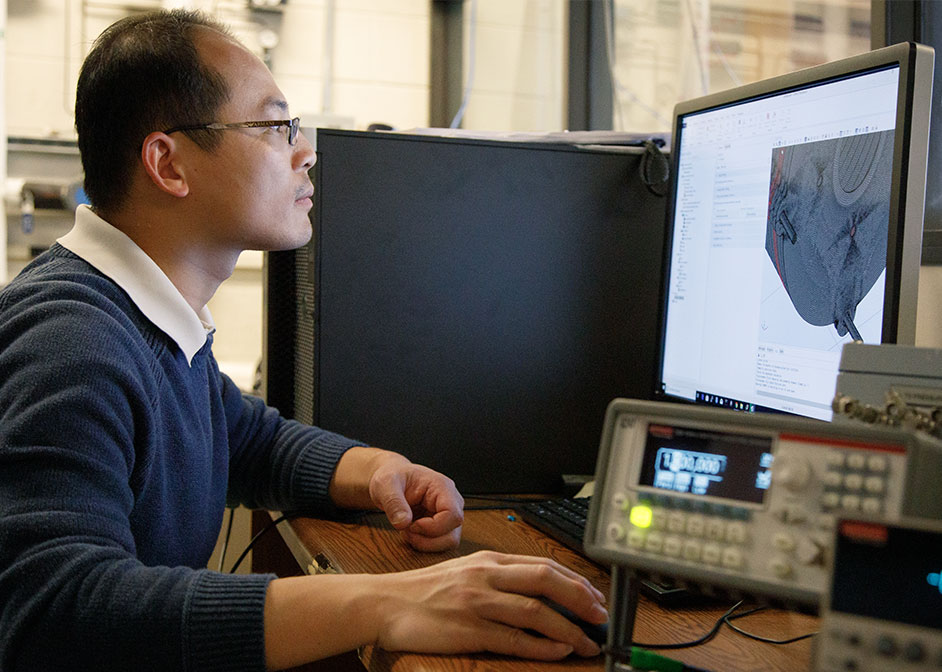Ph.D. Student Ziping Ye Studies Supernova Neutrinos
Ziping Ye, a Ph.D. student in physics in the College of Natural Sciences and Mathematics, received a Best Graduate Student Presentation Award at the 2018 Texas Section of the American Physical Society Meeting. This award was for his research on the use of dark matter detectors to study neutrinos coming from supernova events.

“Ziping has the ability to quickly understand the problem and develop a methodology to solve it,” said Andrew Renshaw, University of Houston assistant professor of physics, who serves as Ye’s advisor.
The Death of a Star: A Supernova Event
When massive stars die, they explode, emitting an intense burst of light and energy. Called a supernova event, star deaths are estimated to happen within the Milky Way galaxy a couple of times every century. Before the invention of the telescope, only five supernova events were observable by the naked eye within the last thousand years. They appeared in the night sky as a new star, only to die out after a period of time.
“We don’t know where a supernova will happen, or when it will happen, we only know there will be about 3-5 events in a century,” Ye said. “We are waiting for that.”
A supernova event lasts 10 seconds, during which it emits an amount of energy that is 20 to 30 times more than what the sun will emit in its lifetime.
Ninety-nine percent of that energy comes in the form of neutrinos, which are particles with no charge and a mass that is only one-millionth that of an electron. This neutrino burst lasts for about 10 seconds. Supernovas also produce gravitational waves, followed by a burst of photons that result in a long flash of light.
Capturing neutrinos from a supernova event promises to yield insight about the evolution and death of stars and the physics involved with neutrinos oscillations. It will also advance basic understandings in particle physics.
DarkSide Collaboration: Detecting Dark Matter and Neutrinos
Ye is a member of the DarkSide Collaboration, which has a primary aim of detecting dark matter. Its detector is located at Gran Sasso National Laboratory in Italy.
Dark matter is a form of matter, shown to account for the majority of matter in the universe and to be made up of as-yet-undiscovered subatomic particles. Given that it does not interact with any form of electromagnetic radiation, such as light, it is extremely difficult to detect using traditional methods.
“Neutrinos are very similar to dark matter,” Ye said.
This similarity means that the DarkSide detectors are also detecting neutrinos. The DarkSide Collaboration, as is common with many particle physics projects, is big science, requiring the involvement of scientists from around the world.
Ye’s expertise is in filtering out signal from noise.
“My job is to predict the precise rates of neutrino events in the detector,” Ye said.
In the meantime, with detectors around the world capable of detecting neutrinos, particle physicists are waiting for the rare supernova event, ready to capture it when it happens.
“This is an exciting time to be in particle physics,” Ye said.
- Rachel Fairbank, College of Natural Sciences and Mathematics